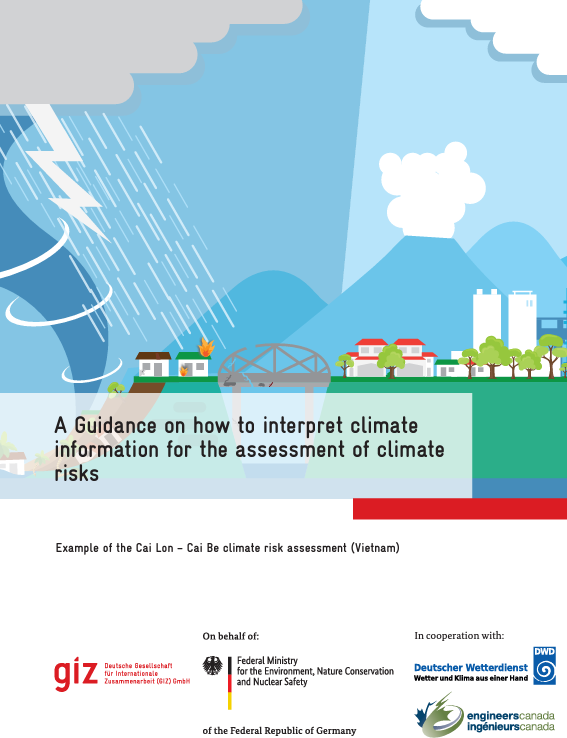Article /
A Guidance on How to Interpret Climate Information for the Assessment of Climate Risks: Example of the Cai Lon – Cai Be Climate Risk Assessment (Vietnam)

Summary
This resource was submitted by the Climate Risk Institute for use by the CanAdapt Climate Change Adaptation Community of Practice.
This article is an abridged version of the original text, which can be downloaded from the right-hand column. Please access the original text for more detail, research purposes, full references, or to quote text
Every year, emerging economies and developing countries invest billions in long-term infrastructure projects. However, their plans often fail to take account of future climate change. This leads to high risks of damage and misguided investments that harbour potentially serious consequences for the economy and society. Many countries – amongst them Brazil, Costa Rica and Viet Nam – have now launched efforts to raise the resilience of their infrastructure, prioritising this as a target in their Intended Nationally Determined Contributions (INDC).
Known as Climate Services, user-oriented climate information and products (e.g. risk and vulnerability assessments) that enable public and private decisionmakers to manage climate risks and opportunities form a major cornerstone for achieving this target. Many countries so far lack the institutional, technical and service-related conditions they need to set up and mainstream Climate Services in their planning procedures and regulations. Amongst the first international initiatives to take up this challenge is the Global Framework for Climate Services (GFCS) of the World Meteorological Organization (WMO).
The objective of Climate Services in the context of climate risk assessments is to empower decision-makers to assess the risk of climate for the infrastructure of concern in order to make decisions on adequate adaptation measures. However, climate information is mostly presented in a very technical way, which is often not understandable for non-climatologists and thus of limited use for decision-making. Climate information is often perceived as black box and results are taken for granted without being challenged, despite the existence of partly significant uncertainties. Thus, the objective of this guidance is to approach this problem and provide suggestions on how climate information should be presented to decision-makers in order to support adequate decisions regarding the assessment of risks.
Suggested Citation:
Hodick Benjamin, Baumert Niklas, Woodman Deza Amanda, & Cornejo Ingrid. (2020).A Guidance on how to interpret climate information for the assessment of climate risks. Deutsche Gesellschaft für and Internationale Zusammenarbeit (GIZ).https://climate-resilient-infrastructure.com/wp-content/uploads/giz2020-en-guide-interpretation-low-res2.pdf
Related Reading:
- Enhancing Climate Services for Infrastructure Investments
- PIEVC Program
- Climate risk analysis and assessment report for Cai Lon - Cai Be sluice gate project based on the PIEVC protocol
